Automotive enthusiasts have their own lingo, making it a bit confusing for the layperson to completely follow their instructions. When it comes to a manual transmission, you are sure to hear plenty of it. If you have heard the phrase "feathering the clutch" and are wondering what it means, we can help. We researched manual transmissions and the lingo associated with them in depth so that you'll know for sure what they are talking about.
Feathering the clutch refers to the driver gently pressing and depressing the clutch while in first gear or reverse without any pressure being placed on the accelerator. Feathering the clutch will give the vehicle a bit of momentum and is a tactic some drivers use when they want to slowly move their vehicle forward or backward.
Now that we know what feathering the clutch means, we'll see how this can be incorporated into the proper shifting of gears. You might also be wondering what "dumping the clutch" means or if you should press the clutch while braking. For the answers to these questions and more, read ahead in this post to see what our research has revealed.
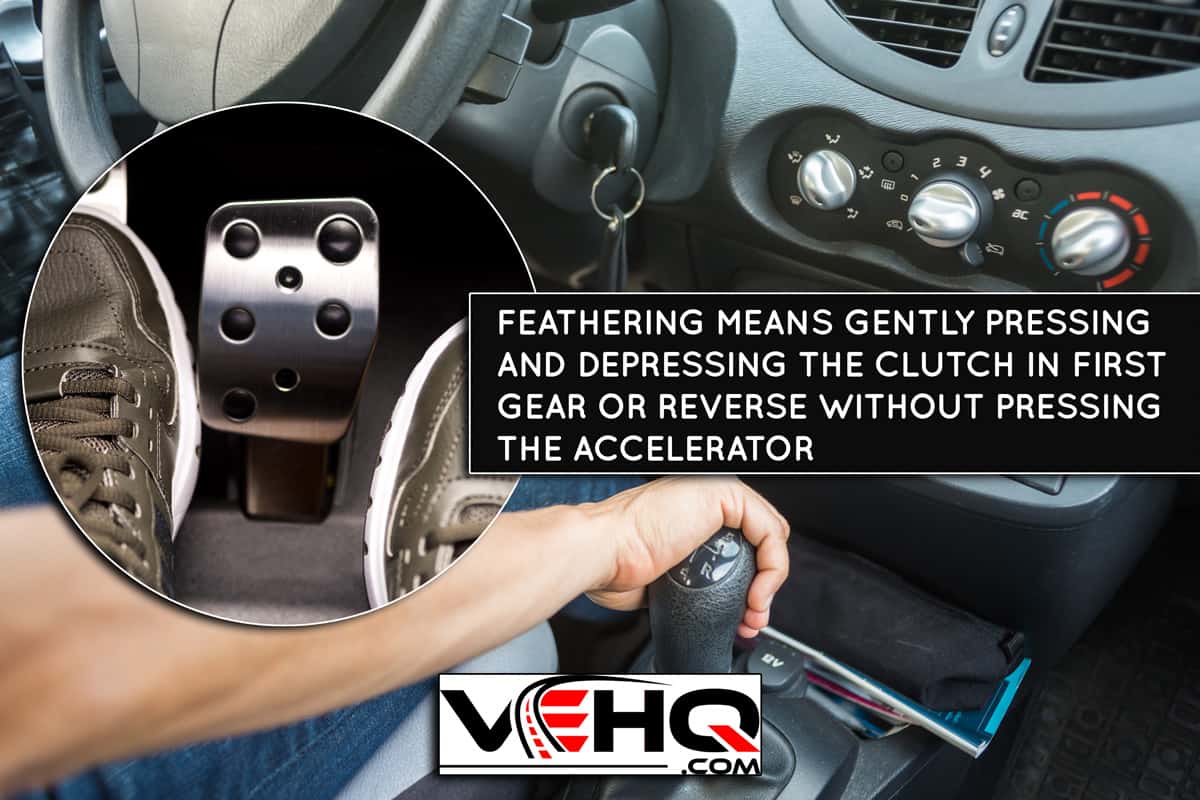
How To Properly Shift Gears With A Manual Transmission
If you have never operated a stick shift, it might seem a bit intimidating. However, with a bit of preparedness and some practice, you'll soon be shifting gears like a professional.
In this section, we'll go over the steps you'll take to fully operate a vehicle with a manual transmission. But before we discuss the steps, it's important to know the different parts you'll be operating.
In a vehicle with an automatic transmission, there is only the accelerator and the brake on the floorboard. In a manual, you will notice a third pedal, just to the left of the brake. This is the clutch.
The gear shift is normally between the two front seats near the right knee of the driver. It sits just in front of the emergency brake. When you get into the vehicle, the emergency brake will have ideally been engaged.
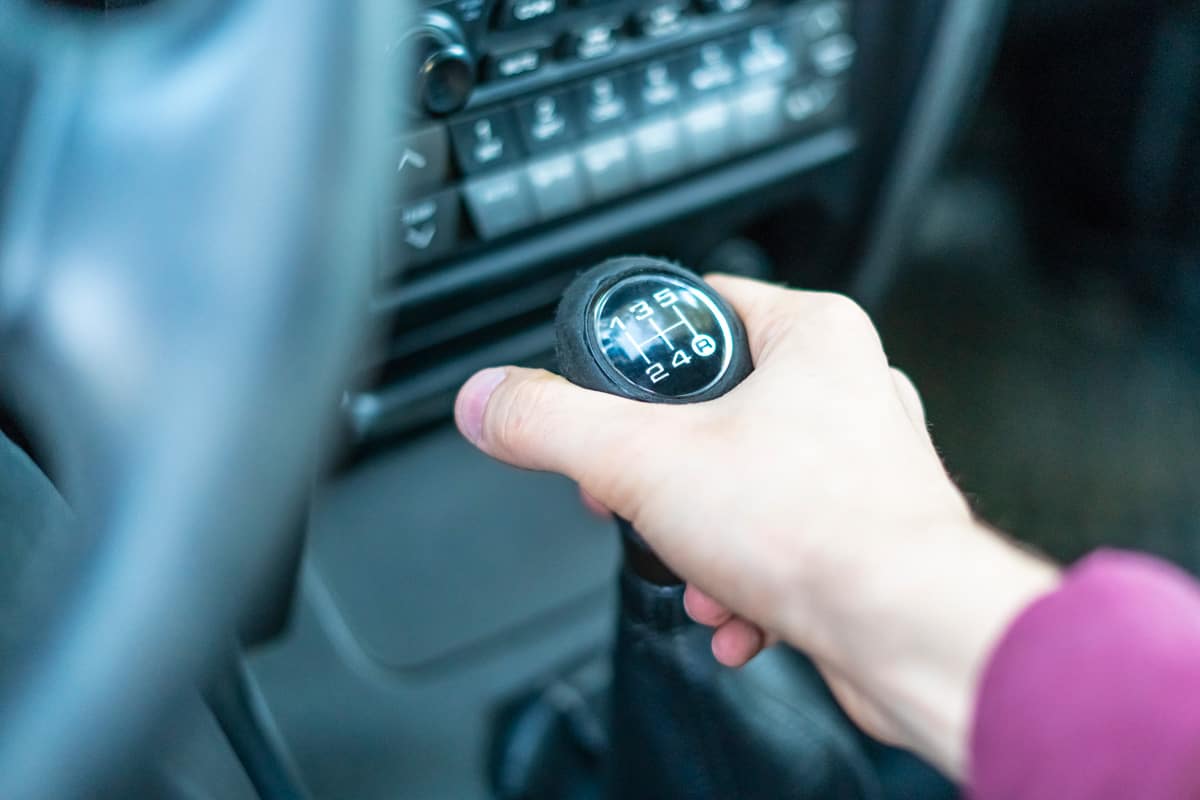
Starting Up The Engine
Press the clutch to the floor with your left foot and hold it there. Turn the ignition key to start the car. Press the brake with your right foot.
Getting Your Vehicle In Motion
With the clutch and brake pressed in, put the gear shifter in first gear. Slowly remove your right foot from the brake pedal.
Slowly begin to remove your foot from the clutch. This will make the vehicle move slowly forward or backward depending on the plane you are parked on. You can keep the vehicle moving in this step by gently pressing and depressing the clutch, which we defined as "feathering" earlier.
As you slowly release the clutch with your left foot, slowly apply pressure to the accelerator. This will move the vehicle forward with more force. The tachometer on your instrument panel will begin to show an increase in RPMs.
When the accelerator is firmly pressed down, the left foot should be completely off of the clutch. You are now driving in first gear.
Shifting Into Higher Gears
When you hear the engine needing to shift gears up, simultaneously press in 0n the clutch with your left foot as you let off the accelerator with your right.
With the clutch fully engaged, shit up to second gear, then simultaneously release the clutch while you press down on the accelerator. Repeat for third gear, fourth gear, etc.
Downshifting And Braking
When you need to downshift, let off the accelerator while pressing the clutch to the floor. Shift gears down with the clutch held in place. Then let off the clutch while you press in on the accelerator.
To brake to a stop, press in on the clutch with the left foot and the brake with the right foot in one simultaneous movement. While both pedals are pressed to the floor, move the vehicle's shifter into neutral.
For best results, review these steps and commit them to memory before getting behind the wheel of a vehicle with a manual transmission. Armed with this knowledge, you'll find it easier when you do try to operate a stick shift for the first time. Practice makes perfect!
What Is Dumping The Clutch?
Dumping the clutch is when a driver releases the clutch quickly. This is done to help get the car moving faster when it is idle. It can also be used to help it turn corners quicker.
This technique is not necessarily good for the clutch. Dumping the clutch will keep the car from stalling before first gear is engaged, but it will put a good deal of wear on it. Experienced drivers will not need to dump the clutch to keep it from stalling.
The engine and transmission can also suffer damage if you incorrectly dump the clutch.
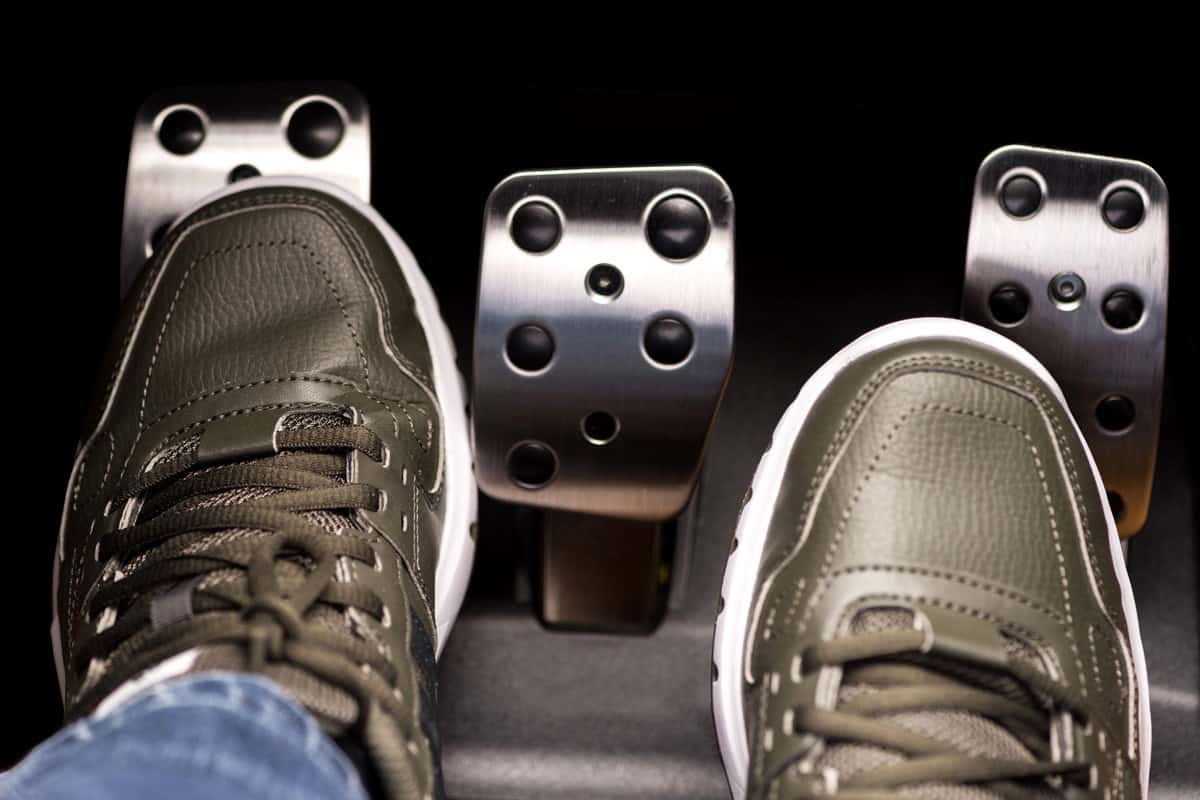
Should I Press The Clutch While Braking?
Earlier in this post, we stated that you press in on the clutch when you brake to a stop. But should you press in on the clutch every time you want to slow your vehicle down?
Auto experts state that while you should use the clutch to come to a complete stop, you should avoid this pedal when you just want to slow the vehicle. When you need to slow down, you will let off the accelerator.
This signals to the engine that you do not require as much power, and it begins a process called engine braking. The engine cuts power and begins to slow the car without the assistance of the brake.
So when you do apply the brake, the engine is already helping the vehicle slow down. This puts less wear on the brakes. But if you have the clutch engaged with the brake, the vehicle thinks you might be upshifting and will not begin to engine brake. This means a lot more wear on your brakes.
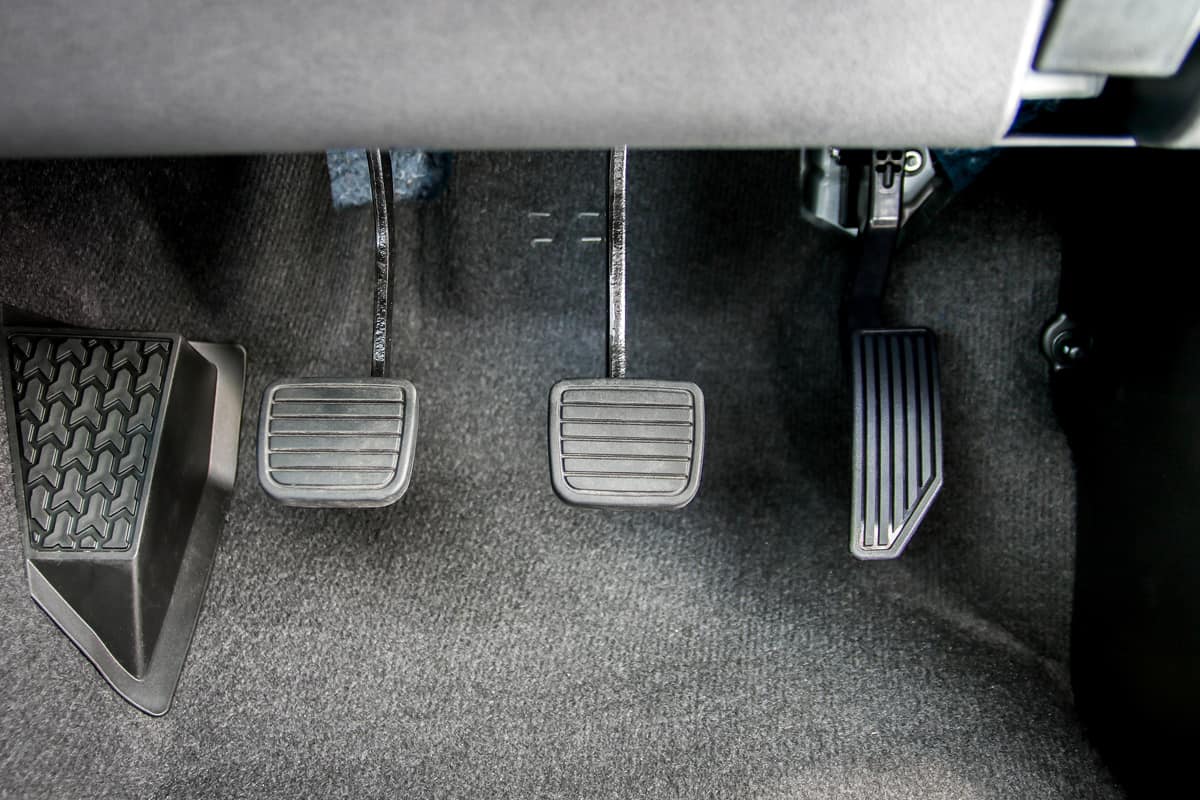
What Is A Money Shift?
A money shift is when you miss the gear you are shifting into, accidentally putting your transmission in a much higher (or lower) gear than intended.
Imagine being in fifth gear and attempting to downshift to fourth. But instead, you miss and accidentally shift into third. The result is a high-pitched whine from under the hood, and it's not a good one to hear.
It's called a money shift because, as auto enthusiasts joke, it will cost a lot of money to repair your vehicle if you keep it up. But while it does wear the clutch and transmission a bit, it will take money shifting more than just a few times to do significant damage to your vehicle.
What Shouldn't I Do With A Manual Transmission?
With an automatic transmission, there isn't much you can do to harm it with routine driving. But there are several bad practices you might not be aware of that can greatly damage a vehicle with a manual transmission.
We already mentioned that feathering the clutch too much or for too long will wear out the clutch faster. We also discussed why you should avoid dumping the clutch and why you should be careful to not money shift. But there are a few other things you should be aware of.
Don't Use Your Shifter As An Armrest
It might be tempting to keep your hand on the shifter knob at all times. But you might be surprised to know that this added constant pressure will prematurely wear out this component. Also, unless you are actively shifting, you should be keeping both hands on the steering wheel.
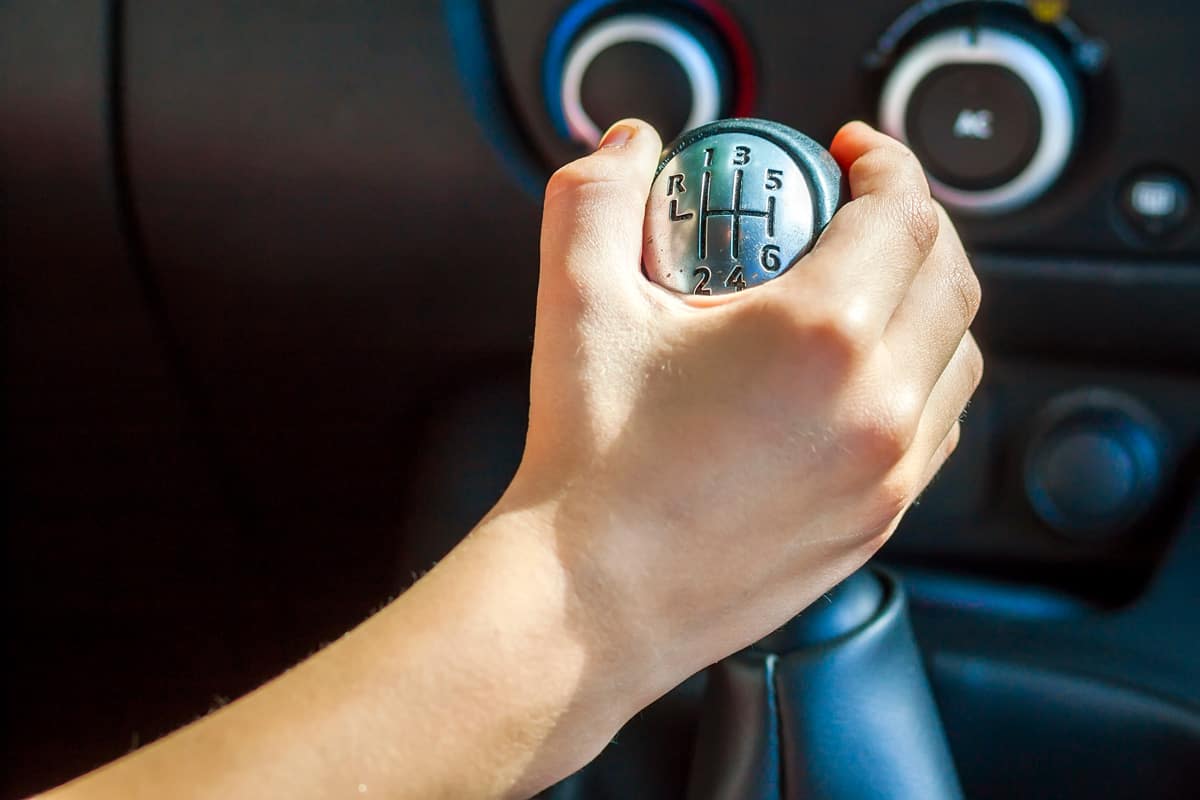
Don't Rest Your Foot On The Clutch Pedal
Doing this will wear out your clutch prematurely. This isn't necessarily the cheapest part to replace, so treat it right so that it will last.
Mash On The Accelerator When In Low Gear
Being impatient to gain speed can be done this way, but it isn't great on your transmission. You should be shifting gears smoothly and consistently. You're trying to get to the supermarket, not trying to win the Indy 500.
Final Thoughts
Feathering the clutch will give a vehicle a bit of momentum without engaging the accelerator. While it can come in handy at times, it will put a lot of undue wear on the clutch if you do this as a common practice.
Learn the basics of how to drive a stick shift before you get behind the wheel of a vehicle with a manual transmission so that you'll have a better idea of what to expect. Drive safe!
We hope this post on the clutch was able to answer all of your questions. For additional helpful information, we recommend the following posts:
What Pickup Trucks Come In Manual Transmission?
Can Transmission Fluid Get Low Without A Leak? [6 Points To Check]

Great content I really like how you break the process down of driving a stick shift. I have been driving a stick shift for 22 years, and it is the only type of car I have now. I very much enjoy driving a stick over an automatic transmission because it gives me more control. I will not drive anything else. Once you go stick you’ll never go back (well once you learn it properly). I very much appreciate the great information, good job!!